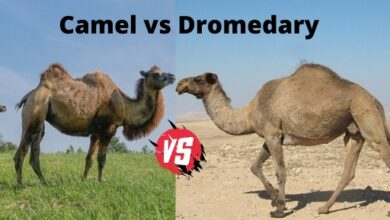Institutional advertising is the promotional message used by an organization to promote, rather than its products, which aims to create a positive image, improve reputation, build a brand, express an idea or philosophy of the company.
It differs from common commercial advertising, as it has the objective of selling a specific product or service. When promoting the organization, activities are designed to create a certain awareness about it, such as trustworthiness or respectability.
The ultimate goal is to make people more willing to think positively about the organization. In some cases, these actions can result in a greater consumer preference when deciding on a purchase. Also known as corporate advertising
Institutional advertising is often a reaction after an event or situation has damaged the company’s image.
However, other companies conduct planned and proactive institutional advertising as a complement to institutional relationships. Public relations is an important part of institutional advertising.
Characteristics of Institutional advertising
It is the type of advertising that promotes a company, institution or similar unit. The business promotes itself rather than its products. However, the important thing to remember is that institutional advertising is not intended to sell any product directly.
objective
Its main objective is to create an image for the business and build a brand for the organization, informing consumers about its philosophy. The company also tries to promote its mission, vision and principles.
It informs the general public about the work carried out by the organization in the areas of health, education, environment and other related areas, seeking to build a reputation for the company.
Companies also use this type of advertising to promote their qualities such as reliability, low prices or good customer service that set them apart from their competitors.
Methodology
Like any other type of advertising, the company must define a target group, a message, in addition to the means or methods to communicate the message and thus obtain the expected results.
Benefits
– The company’s image is improved, investors and customers are attracted. It also helps in product diversification.
– Investors are motivated by the overall image of the company, not just its products and services.
– Improves company public relations and helps to be first in mind through brand awareness.
– Companies engaged in good social responsibility activities also get benefits from the government.
Disadvantages
– Institutional advertising does not promote the products and services offered by the company. Therefore, the cost of advertising does not generate revenue.
– Because it is an activity that promotes values, ethics, social responsibility, etc. of the company, there is no way to measure its impact.
– Investing money in institutional advertising does not guarantee a positive impact on sales of goods and services, as it is simply a public relations exercise.
Types of Institutional advertising
half printed
Print may be the largest and most diverse type of institutional advertising. Traditionally, it refers to advertisements placed in print publications such as magazines and newspapers.
Over time, advertisements also found their way into restaurant menus, newsletters, and many other forms of non-traditional print publications.
Direct mail, where print advertisements are sent to a customer‘s home or business, is also included in the print media type.
Radio
The institutional radio advertising type includes all commercials played on radio stations, whether a music, talk, or other format station.
These commercials are usually produced to run for a standard number of seconds, depending on the space they run in.
Radio ads can be created by professional producers. Some radio stations also offer production services for an additional fee.
TV
Like radio, this type of institutional advertising consists primarily of television commercials of a specific number of seconds. They are produced either by a production company or by the station that runs the commercials.
Television has an additional advertising component not normally seen in the radio world: infomercials. These extended commercials are paid advertisements that can last for an entire television program.
While these are usually sales demos, they can also be used to create brand messages.
digital support
It is one of the newest types of institutional advertising. It is considered the fastest growing format.
Refers to any advertisement involving a computer. This includes flyers sent to customers via email and advertisements on shopping, social media and other websites.
It also includes mobile media such as smartphone apps and text message ads.
Examples of Institutional advertising
Mirton
This is a company that manufactures and markets various food and beverage brands. In recent years, the brand has faced strong competition from neighboring countries, due to lower import tariffs that have made these competitors more affordable.
The marketing manager felt that people should know that Mirton provided employment for thousands of people and that it is a company that promotes small and medium-sized suppliers. He said consumers need to stick with domestic producers rather than choosing imported brands.
To that end, a new advertising campaign showcased images of Mirton’s manufacturing facilities, reinforcing words like “we” and “our”, showcasing the company behind the brands.
Publicity also promoted the benefits Mirton delivered to the national economy. Similar campaigns were implemented year after year, with positive consequences for consumers.
After a few years, Mirton’s market share increased and the company managed to reach the previous sales level.
Coke
Coca-Cola has also been active in institutional advertising for a long time. With its flagship product, Coca-Cola has been at the forefront of promoting environmental concerns.
Its recycling and Greenpeace ads were well received by target consumers and simultaneously helped establish it as a brand that promotes environmental sustainability.
gulf oil
The world’s largest oil corporation, Gulf Oil, raises awareness of the issue of oil spills in the ocean and how dangerous oil extraction is to marine life. They also launched a campaign to save the environment.



